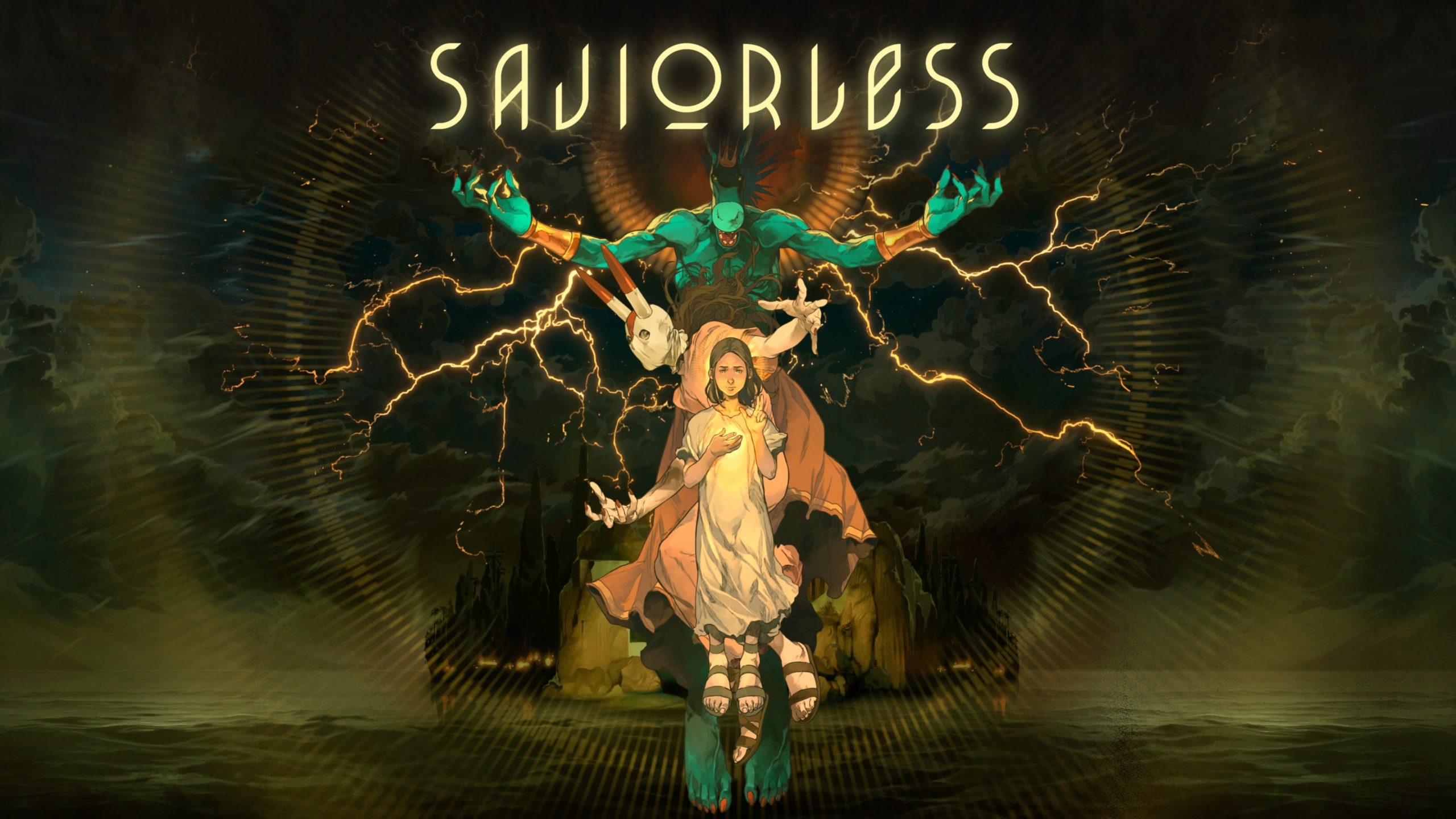Ever since Nomada Studio’s Gris, I’ve been quite partial to a hand-drawn/animated 2D platformer. The only problem is that they’re very few and far between. That is until I saw the trailer for Saviorless, an enigmatic yet sumptuously designed title that had me all kinds of intrigued.
Looking like a grimdark fairytale with incredible attention to atmosphere, I couldn’t wait to dive into Saviorless. But how does it fair alongside its niche list of contemporaries? Is it a saviour to a barren genre? Or is it just as the title suggests? Let’s get into it.
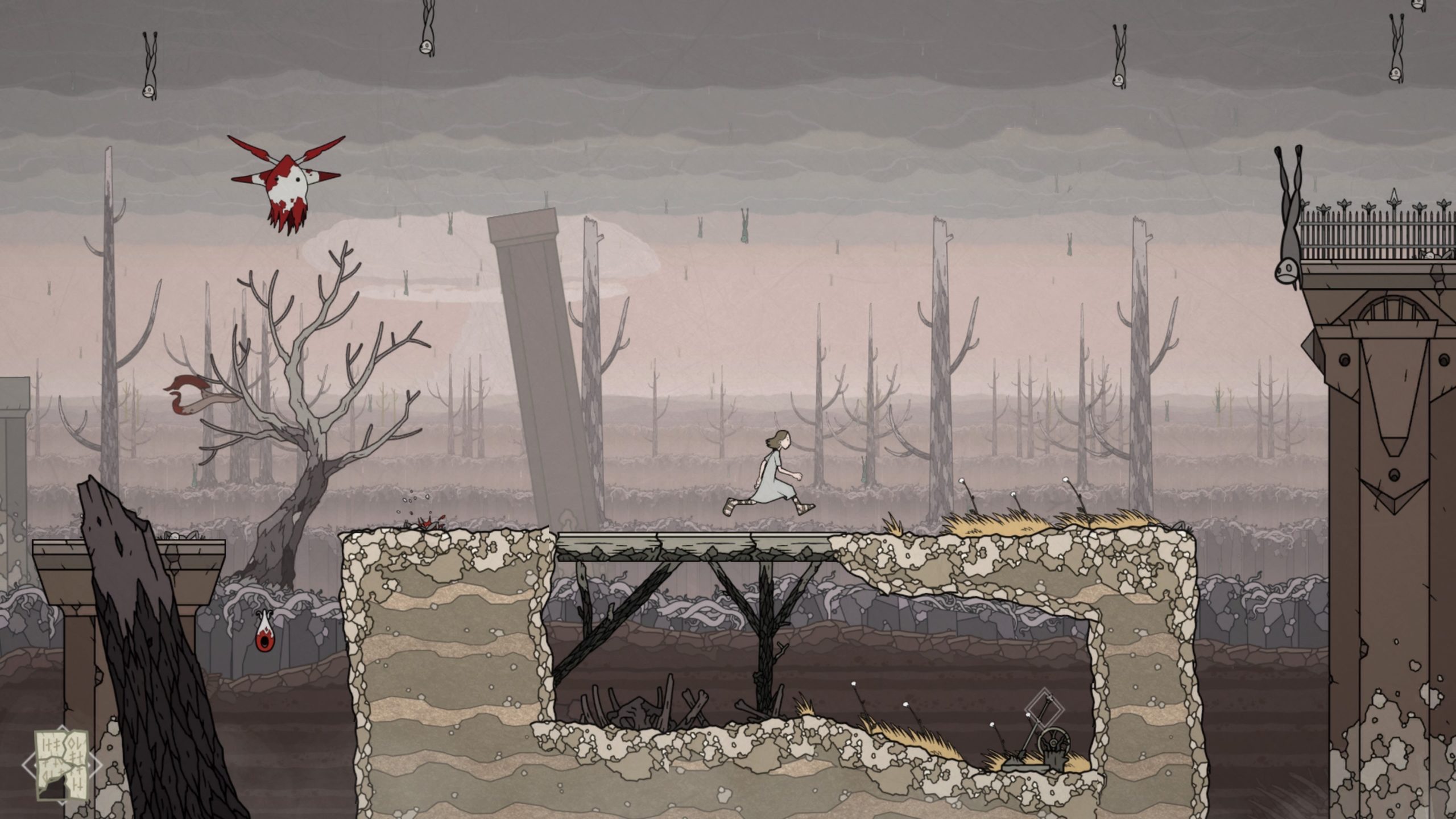
I Need A Hero
The game opens to three narrators, looking down from above the clouds. The elder of the three is about to retell a story that’s seemingly been told many times before, as the other narrators grimace at the thought of it. However, we learn that it’s very important to retell the story, as they do not create it but rather keep it perpetually going.
You play as the protagonist of this story, Antor, a young child who’s on a journey to The Smiling Islands, determined to become a Savior. The world is stooped in powerful mythical creatures and Antor is a powerless mortal that has to be careful during their treacherous journey. As a starting point, I was really engaged with how mysterious and dark the story is. There’s a whimsy with a contrasting foreboding undercurrent that came across as really interesting.
However, by the end, I’m still not much the wiser about how the world works on a deeper level. Things happen, there’s a big bad named Fento who alters Antor’s course and there are a couple of endings to get, but I ended up not really caring about what was going on, due to how minimal the story is outside of the plot.
Perspectives shift and alter, but it’s more of a neat gameplay mechanic than something that serves the story justice. Saviorless is beatable in 3-5 hours, so it is a short run time to establish such grand themes, but I can’t help but think the narrative is just vague anyway – like there were good ideas but not as good execution of them.
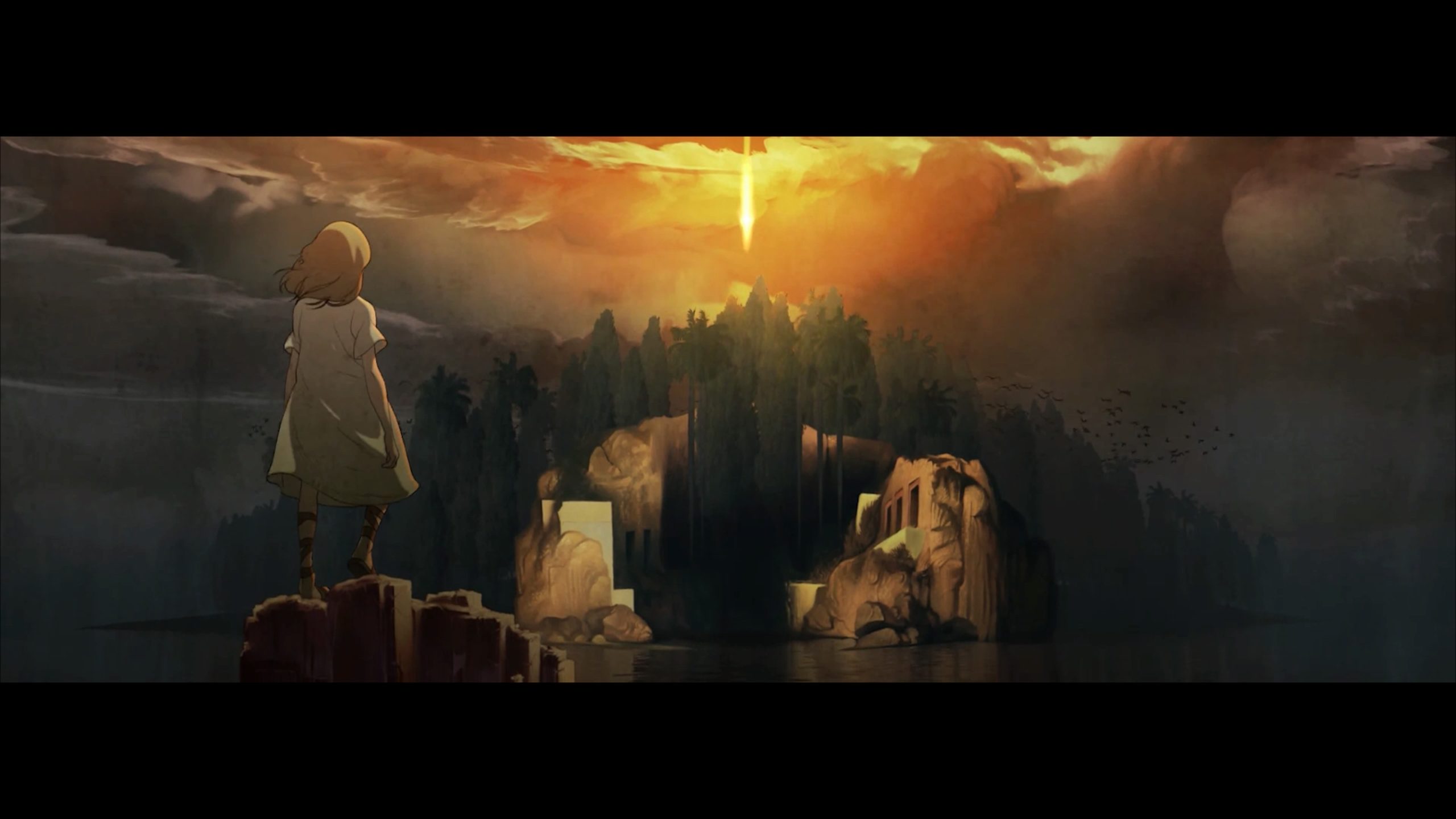
Savour The Journey
As I mentioned at the top, Saviorless is a 2D platformer. Think more along the lines of Flashback or more contemporarily Full Void; the pacing is slow, jumps are floaty but have tanky weight and the platforming is very precise. The bulk of the gameplay is through the steps of Antor, but the game also gives you hands-on with other characters. Antor will perish in one if they fall into a pit or touch a hazardous environment – sometimes ending in a substantial setback, especially in the latter half of the game.
You will also play a Savior version of Antor, more nimble with a better jump and even a dash. As well as that, you can fight back against the enemies that are after you in quite a ferocious and bloody way. However, the Savior is on a timer that will tick down to death if you don’t kill or destroy to replenish the timer. And finally, you will also play a couple of sections as Nento – a tyrannical hunter and the game’s villain that will kill anyone in its way. Nento plays very similar to Savior but is more powerful.
I understand the juxtaposing feeling of playing both sides, it creates a distinct difference between the characters. With that said, the game’s environmental platforming and dodging of enemies feels quite archaic. Maybe I’ve been spoilt with modern games feeling more fluid and therefore easier, but the platforming ends up becoming so specific and high stakes that I really stopped getting along with how it plays. There are also collectibles to find that alter the story’s ending, most of which I found apart from one and that in itself felt strange, as if there was no consistent thinking on how to dole out the locations.
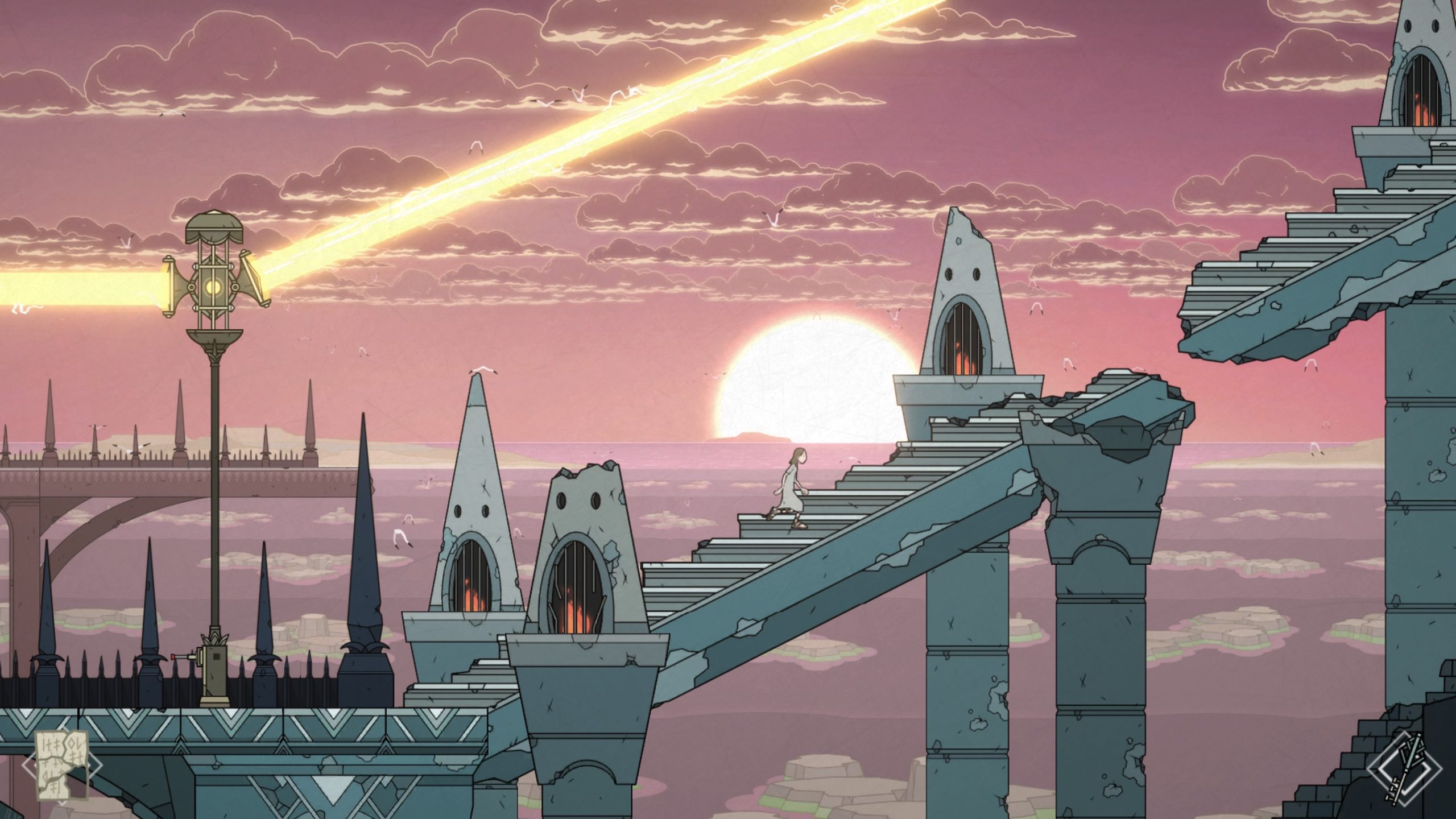
Solving To Save
Something that is consistently rewarding is the puzzles. During my playthrough, there was a frequent pace of discovering a new environmental mechanic that would often build upon previous ones. Whether it’s using enemy attacks against themselves to gain new access to areas or moving objects as a means of defence or traversal opportunities, Saviorless does a decent job of spelling out what you need to do without words or overt guidance.
This is held back by the actual movement of the player itself, as I previously mentioned, but when the game isn’t throwing difficult platforming, it’s a pleasent time. What’s less pleasent for the enemies is your fighting as a Savior, it’s very standard press square to punch and maybe dodge an oncoming attack, that again is at its best when the game’s not layering too much on top.
Some of the bosses in the late stages of the game test out all of the mechanics you’ve learnt but none of it fully feels harmonious. I was unfortunately just getting frustrated with the game’s execution when it tries to do too much at once instead of the pleasantly simpler earlier points of the game.
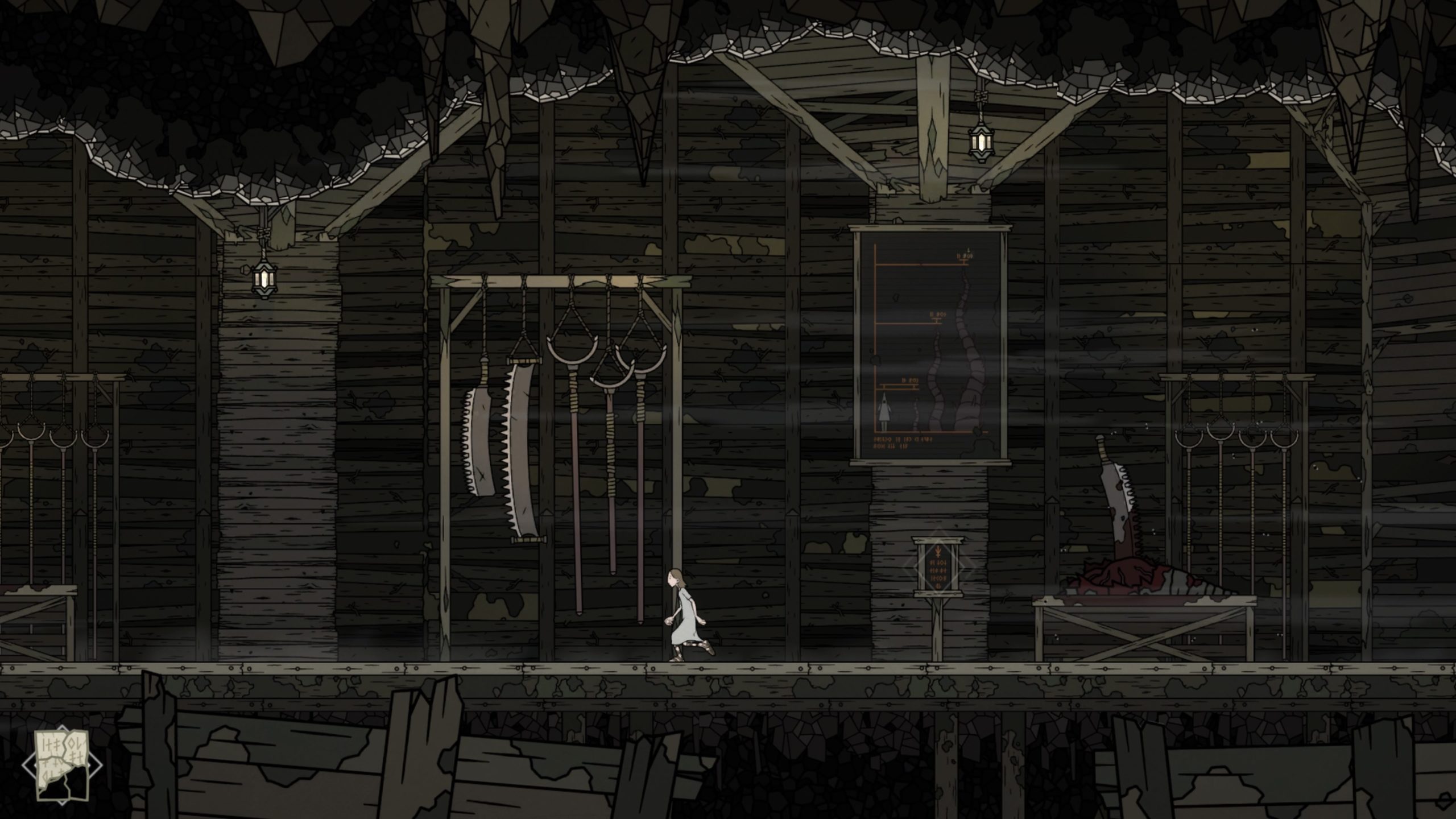
A Grim Tale But Not A Grim Sight
Just like I first saw with the trailer, Saviorless has consistently beautiful artwork. From the oppulent environments like the sunset cascading across the signing birds or the hideously lush ruins of The Smiling Islands, to the unique and highly detailed characters of the story, it all looks like incredible illustrations from a fairy tale.
This is coupled with the ambient and melancholic soundtrack that echo the destitute levels. With piano riffs leading the soundtrack and the more subtle electronic elements elevating the sound, it perfectly befits the atmosphere of the game.
I can’t say I was overly enamoured with Saviorless as a whole. The main attraction from the trailer ended up being the only real attraction for me and that’s the lovely visuals. The gameplay, however, is very rudimentary; simple enough, hard to fully feel in control of your actions and frustrating when it tries to over reach its abilities.
The story had an interesting start, mysteriously bringing in characters and worlds that I wanted to get to know more of and I’m still – having beaten it – waiting to know more. Storytelling has it’s obvious subjectivity and maybe because the gameplay became a hindrance I stopped caring to look and find out the story on a deeper level.
With a vague and unsatisfying story and simple yet frustrating gameplay, Saviorless needed more than an astonishing art style to be the one worth saving. If you’re into the more retro side of 2D platformers than you might get a slight hint of that nostalgia, but it’s otherwise a very one dimensional adventure.
Saviorless is available 2nd April 2024 on PlayStation 5 (review platform), Nintendo Switch and PC via Steam.
Developer: Empty Head Games
Publisher: Dear Villagers
Disclaimer: In order to complete this review, we were provided with a promotional copy of the game. For our full review policy, please go here.
If you enjoyed this article or any more of our content, please consider our Patreon.
Make sure to follow Finger Guns on our social channels –Twitter, Facebook, Twitch, Spotify or Apple Podcasts – to keep up to date on our news, reviews and features.
